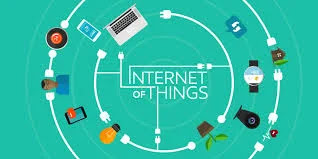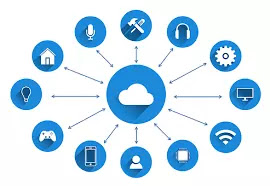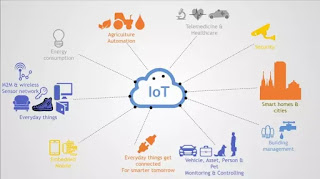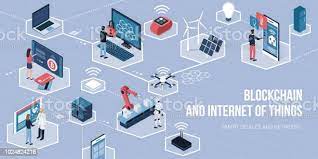Introduction
Welcome back guys, I'm back with a new and interesting topic.
Today, I'm going to talk about how to secure IoT with blockchain. As we all know, the size of the IoT market worldwide has increased significantly during the past few years.
According to the number of connected devices will reach 75.44 billion by 2025, which means we will have a huge number of IoT devices connected to the internet and affect our lives.
As a data-driven system, IoT is all about making decisions, based on the data collected by the smart devices, we will have a bunch of smart devices. We will be responsible for collecting data that will be attached to the physical assets and the collected data will be transferred to the backend systems for further storage and processing.
And later on, that data after further processing will be realized and shown to the business owner or the customers. Based on that data, customers can make decisions for whatever things they want to do.
So, the IoT system can usually be realized using a cloud-centric approach, which means we may have different types of IoT devices.
Some of them are very small, like sensors, actuators, which will talk to the IoT gateway first, and then the IoT gateway will send the data to the cloud.
For the IP-capable IoT devices, they can directly talk to the cloud back-end. So all that data will first go to the gateway on the IoT cloud. And the cloud service will host a bunch of different types of services to support IoT applications, such as user management, Device Management, storage management, etc.
Based on those services, you can build different IoT applications and provide insight for your users. So users can access those data or visualize those data using different types of devices like laptops, smartphones, and tablets.
There are so many important companies for IoT cloud platforms in the market like Aws from Amazon, Microsoft Azure, etc. So those cloud services provide cloud management for IoT components, which will facilitate the development of IoT solutions.
As we can see, the IoT systems are quite complex. So the data will go through the different types of entities along with the systems, which makes the process of securing IoT applications politically challenging.
When you consider the security for the different stages, for example, when to consider secure hardware, which will run a secure OS by loading a trusted firmware into your smart devices mentioned, we'll be able to establish a secure communication channel with a cloud back end.
On the cloud side, you need to host several different security-related services to ensure confidentiality, data integrity, availability, based on those security services.
Data is super important in IoT systems. To ensure data and trustworthiness, we need to realize the vision of the Internet of Things.
We need to consider the securities or the data lifecycle for the Internet of Things, which include our data collection, data in transit, the rest is processing, as well as data retention. So we need to ensure that security has been properly implemented across the entire data lifecycle.
How can we use blockchain to enable this end-to-end security for the internet of things?
Before we talk about it in more detail? Let's look at
what's blockchain?
- The Blockchain is a distributed database that uses a peer-to-peer network to record transactions of digital assets and other records, which can be viewed by anyone with an address.
- The Blockchain is a public ledger that records transactions, but the ledger itself is decentralized and is not under the control of a single entity, such as a bank or government. The information in the ledger is stored as “blocks” of data, each containing a timestamp and a link to a previous block.
- Blockchain has two major categories: permissioned and permissionless blockchains
- For the permissionless blockchains, which means everyone can join the network and can read the library data and validate transactions. So this type of blockchain is very open. And Ledgers replicates the high degree of trust.
- For the permissioned blockchains, the blockchain on the other side is formed by a set of known transaction parties, all transactions revalidated and are controlled by a selected set of nodes. So, this type of blockchain is mainly for enterprise use cases and permission managers will replicate the high degree of transparency and accountability.
Salient features of Blockchain:
Blockchain provides several saving properties.
- Decentralisation:
The first one is decentralization, which means blockchains running by a committee of nodes in a peer-to-peer manner.
- Immurability:
The second one is immutability. Blockchain uses cryptographic hash functions to link the other block together to ensure data is immutable.
Certifying transparency, blockchain provides a fully auditable and valid ledger of transactions, which can be shared in the entire network for the permissionless blockchain setting, or which will be shared by a set of nodes in the permission settings. The first one says security and resilience.
Each blockchain node or entity is associated with a pair of private and public keys. Blockchain uses public-key cryptography and digital signatures to prove ownership of the data, each from actions to sign the transaction to put it into the blockchain. So only you or your device, which holds the private key will allow the transfer of the ownership of the digital assets.
- Automation:
The last one is automation. Blockchain enables users to build streamlined applications to deal with complex business processes that involve multiple intermediaries using a more powerful concept called a smart contract.
A smart contract basically, is a piece of code stored on the blockchain, which enables automation for dealing with complex spins logics. blockchain already provides this number of certain properties,
What are the implications of these properties for securing IoT applications?
First, what is decentralization? which means to blockchain your system. You can remove the single point of failure efficiently blockchains run by several nodes in a peer-to-peer model.
So This means there's no single point of failure in the blockchain systems.
The second one is immutability, which will ensure your data integrity in your system and certify transparency. Using this property, you can track the status of your connected devices as well as the associated physical assets.
The third one is security and surveillance, which will enable you to authenticate users and devices efficiently.
Each user and device in the blockchain ecosystem is associated with a pair of keys, you can use model password-based key cryptography to efficiently authenticate the user in the classes in your system.
The last one is a smart contract. So using blockchain technology, you can use smart contracts to build trust among the different IoT processes and essentially eliminate the trusted intermediary and reduce the system costs.
You can see from the red figure that based on blockchain technology and smart contracts, you can build trusting IoT systems to power a wide range of IoT applications across different industry sectors. We have already talked about the very nice features blockchain brings to IoT systems.
Credit: IoTex Official
Link: How to secure IoT with Blockchain?
Conclusion:
So, here's the end of the discussion and in the end, I must say that blockchain technology will shape our future because it can be implemented everywhere to ensure security. We can truly secure the IoT with Blockchain.
I want to say that most of you don't comment. I request you to comment and tell me my faults and topics which you want next.















Hi, admin thanks for sharing this informative post with us. With this, I get more knowledge about blockchain and how it is important for IoT technology. Please keep sharing such posts and spread more knowledge.
ReplyDeletesd
ReplyDeleteBusinesses transitioning to digital operations still find value in fax services.
ReplyDeleteFaxing Made Simple
This means that to win the jackpot, the syndicate only needs to match the remaining five numbers.transparent Solana gambling
ReplyDelete